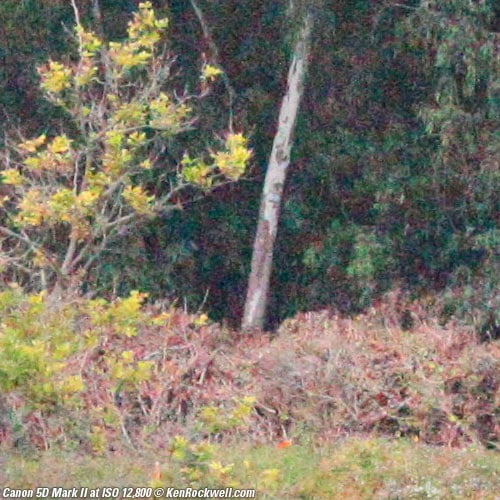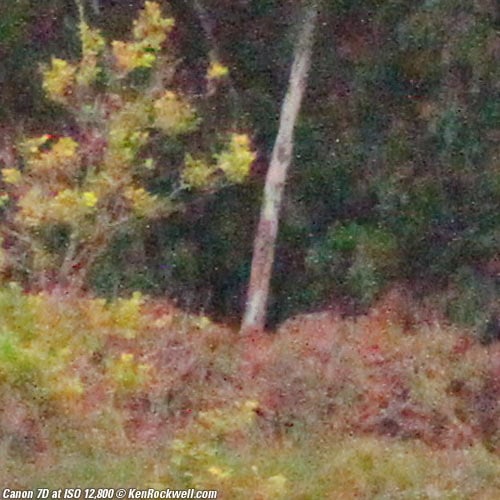Home Donate New Search Gallery How-To Books Links Workshops About Contact Canon 5D Mark II, 7D, 5D and Nikon D300 Comparison Intro Images Analysis Teknik Recommendations It helps me keep adding to this site when you use these links to Adorama, Amazon, B&H, Calumet, Ritz, J&R and eBay to get your goodies. Thanks! Ken.
August 2010 More Nikon Reviews Canon Leica Pentax
Introduction top Intro Images Analysis Teknik Recommendations Let's compare the technical performance of the Canon 5D Mark II, Canon 7D, Canon 5D and Nikon D300 at various ISOs. This will show us both the high-ISO performance, as well as the relative definition, resolution, clarity and image cleanliness of each camera. On most computer monitors at 100 DPI, these are small sections from what would be gallery-sized 56 x 37" (140 x 95cm) prints, if printed in their entirety. At smaller sizes, these differences would be much less obvious. These are crops from same-size prints of the same subject shot from the same place with the same equivalent focal length. You may click any image to get to that camera's detailed review. |
ISO 50 50 100 200 400 800 1,600 3,200 6,400 12,800 25,600 top
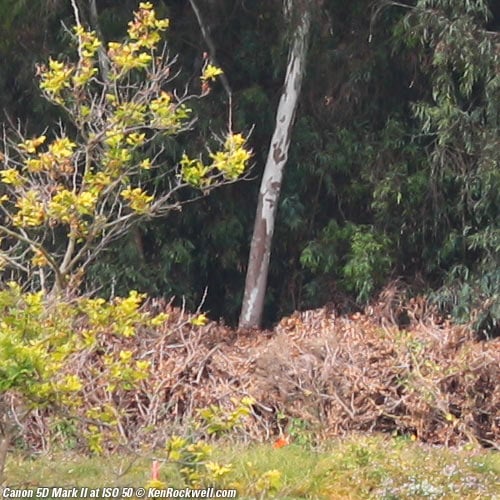 |
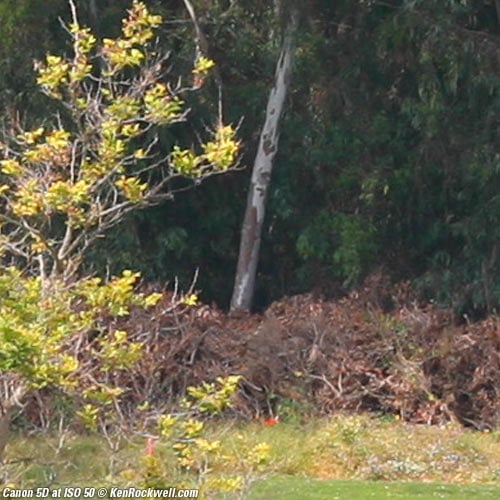 |
(Only the Canon 5D Mark II and Canon 5D go to ISO 50.)
ISO 100 50 100 200 400 800 1,600 3,200 6,400 12,800 25,600 top
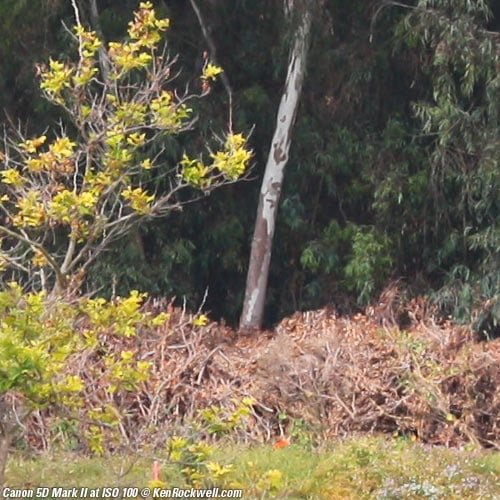 |
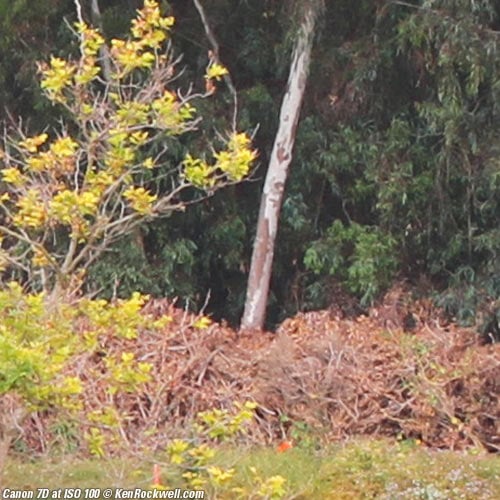 |
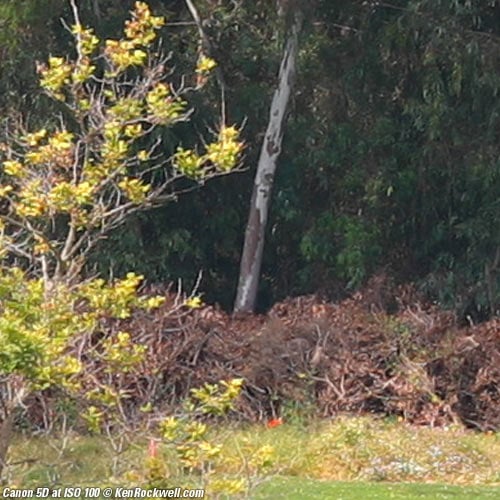 |
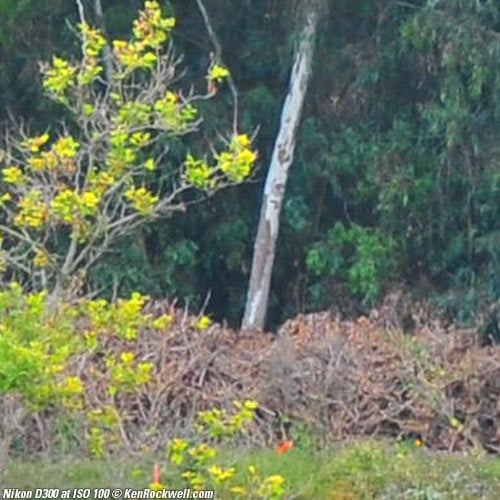 |
ISO 200 50 100 200 400 800 1,600 3,200 6,400 12,800 25,600 top
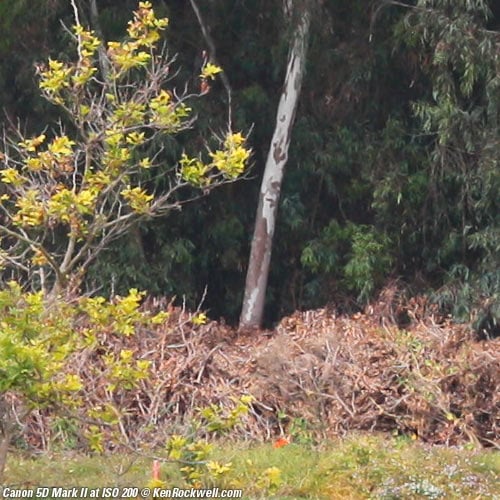 |
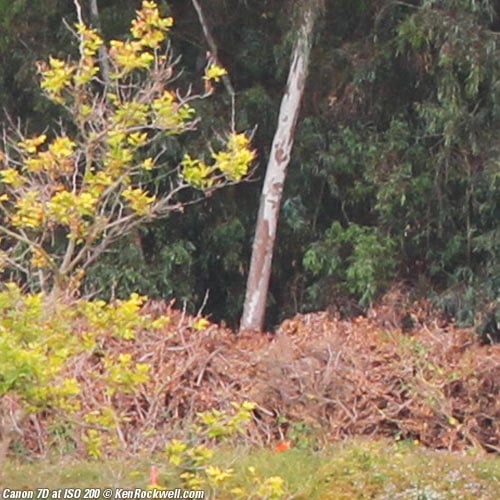 |
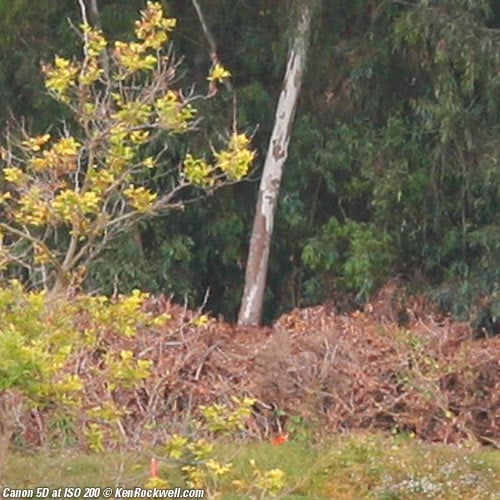 |
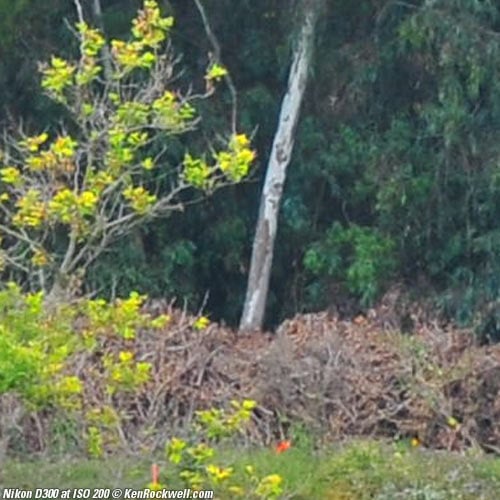 |
ISO 400 50 100 200 400 800 1,600 3,200 6,400 12,800 25,600 top
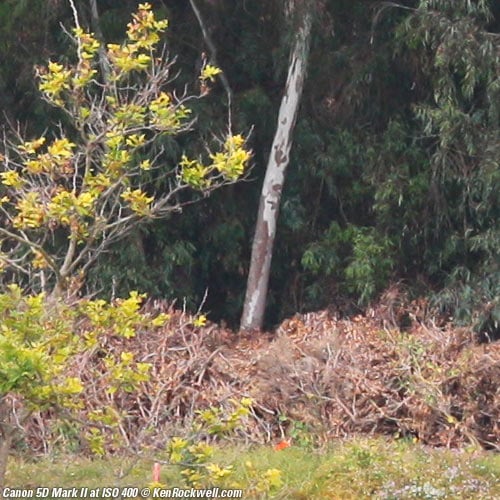 |
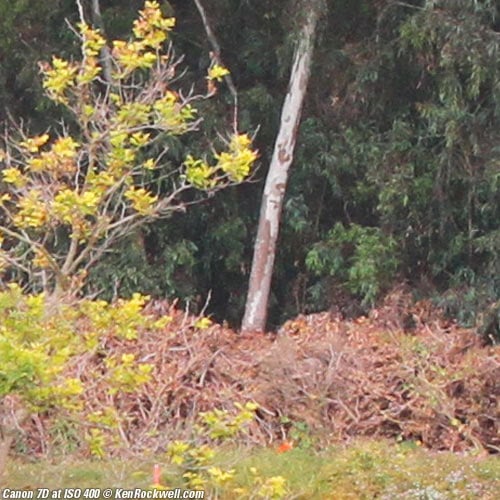 |
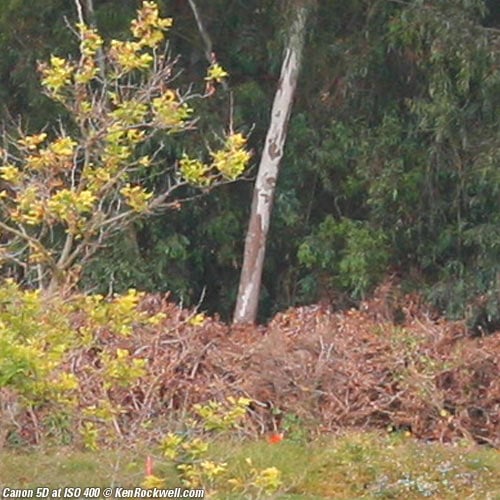 |
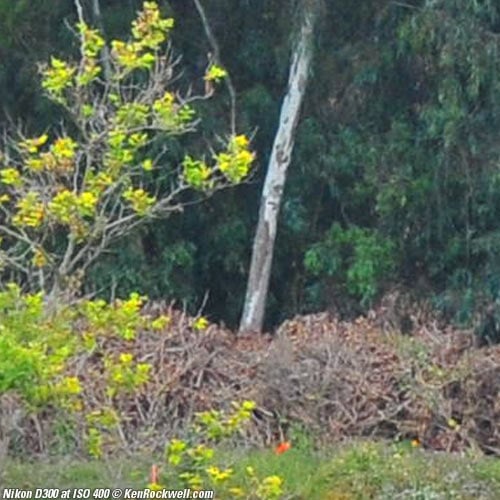 |
ISO 800 50 100 200 400 800 1,600 3,200 6,400 12,800 25,600 top
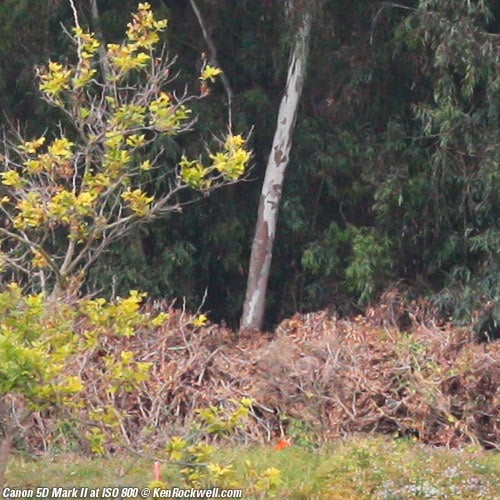 |
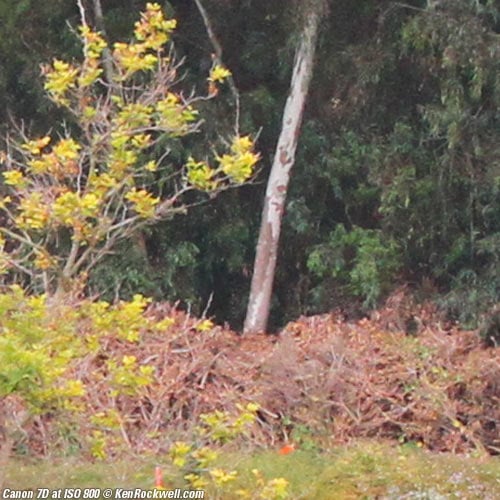 |
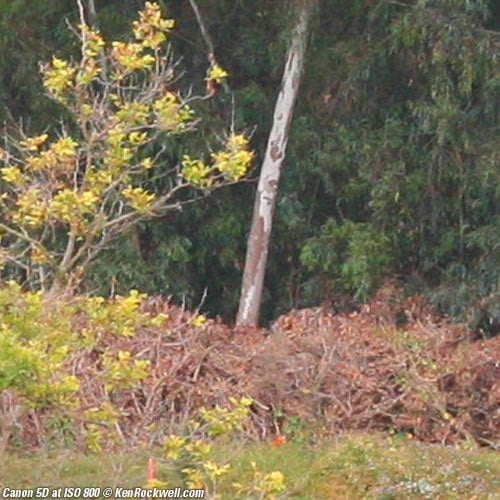 |
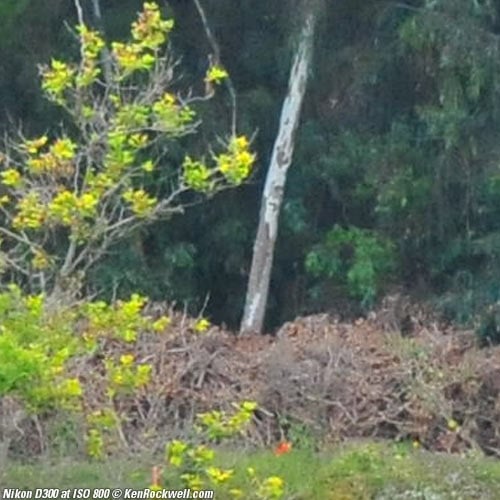 |
ISO 1,600 50 100 200 400 800 1,600 3,200 6,400 12,800 25,600 top
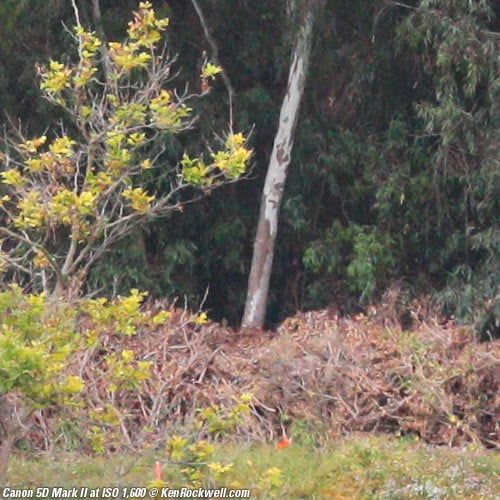 |
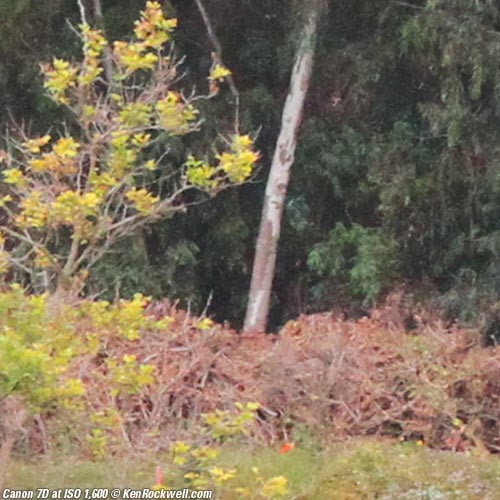 |
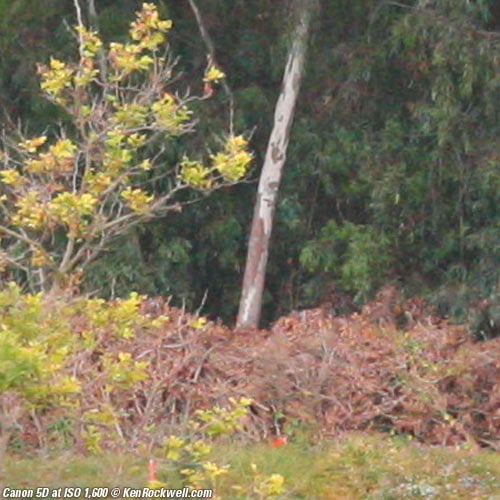 |
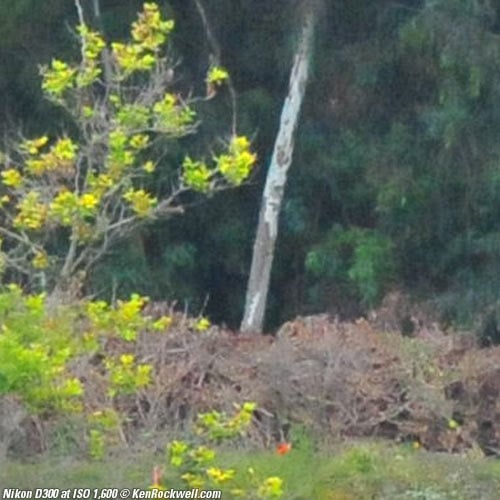 |
ISO 3,200 50 100 200 400 800 1,600 3,200 6,400 12,800 25,600 top
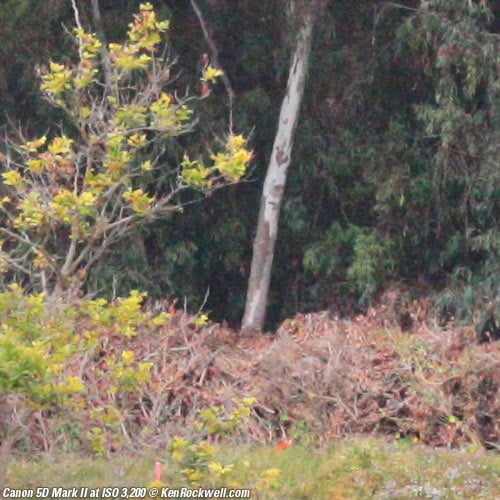 |
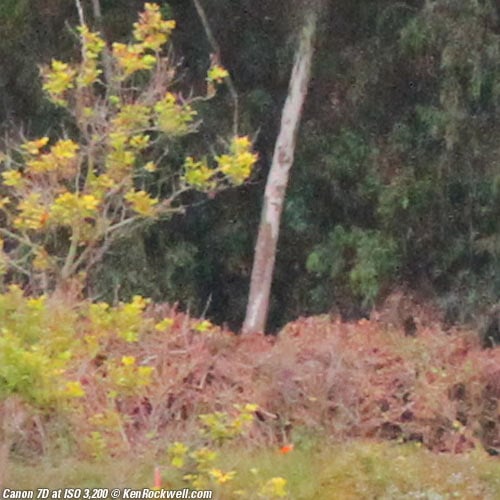 |
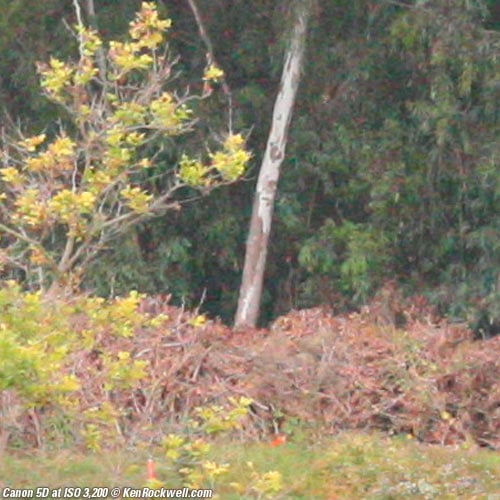 |
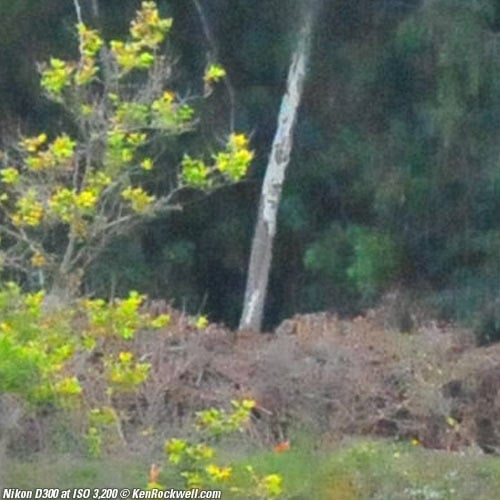 |
ISO 6,400 50 100 200 400 800 1,600 3,200 6,400 12,800 25,600 top
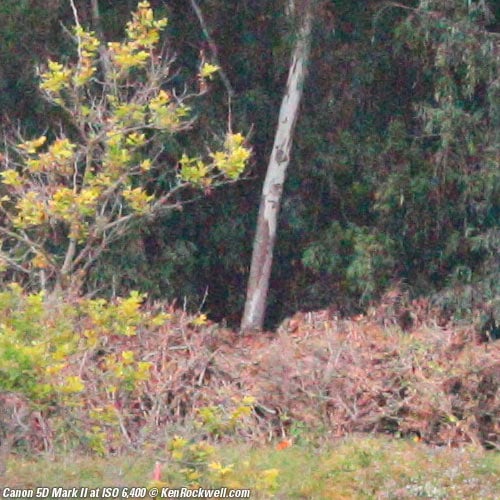 |
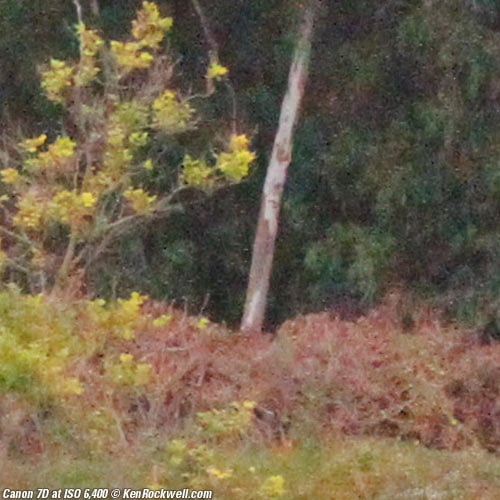 |
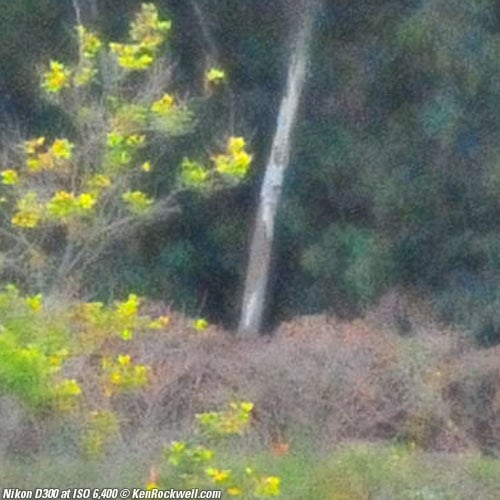 |
ISO 12,800 50 100 200 400 800 1,600 3,200 6,400 12,800 25,600 top
ISO 25,600 50 100 200 400 800 1,600 3,200 6,400 12,800 25,600 top
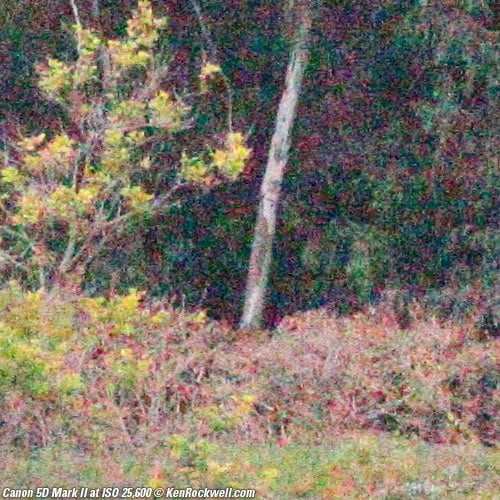 |
|
Analysis top Intro Images Analysis Teknik Recommendations I see no surprises: at low ISOs, pixels count, and at high ISOs, sensor size is everything. As expected, the Canon 5D Mark II is clearly superior to everything, as it has both a full-sized sensor and the most pixels. Also as expected, the original Canon 5D is about the same as the Canon 7D. At lower ISOs, the Full-Frame advantage kicks in, eliminating the on-paper advantage of the 7D's 18MP versus the 5D's 12MP. At very high ISOs, the 5D's much larger sensor gives much cleaner images, while the 7D's images turn into mush. The Nikon D300 is the worst, as expected from it's low resolution and small sensor. At high ISOs, the D300's overactive noise reduction erases most of the picture, turning the image into soft-focus garbage when seen at this large magnification. The D300 looks bluer because that's the way its white balance just happened to be set today. I have all my Canons set to A5. For these gallery magnifications, the highest 5-digit ISOs are just in-camera firmware tricks, not real ISOs that make real pictures. To control noise, cameras today smear and soften everything at the highest ISOs so that there isn't much picture left: just blurs with sharp edges, but no texture other then the noise itself. What you can't see here is how the complete images, which are not shown here for security reasons, look on a 30" monitor. When you see the complete, original files instead of just these snippets, the differences become more obvious. The 5D Mark II looks a zillion times cleaner and sharper than the 7D at low ISOs, and the ISO 25,600 images looks awful!
Teknik top Intro Images Analysis Teknik Recommendations To show all images equally, images from lower-resolution cameras were enlarged to match the highest-resolution camera, the 5D Mark II. The 5D Mark II images are shown at 100%, while the lesser cameras had their images enlarged to the same 5,616 pixels wide in Photoshop CS4 (bicubic) before cropping. The same equivalent focal length was used for each camera. I shot with the sharpest zoom in existence, the Canon 70-200mm f/4 IS L at 116mm on the 5D Mark II and 5D. On the 7D, I shot at 71mm (116mm equivalent) to give the same picture. On the Nikon D300, I shot the Nikon 70-300mm VR at 75mm, which is also equivalent to 116mm on full-frame. Everything was shot at f/8 on a tripod, at a closed military optical test range with synthetic vegetation at 200 meters. Wind and thermal gradients were set to zero. To show each camera fairly, I used complete images directly from each camera. If I had shot raw data instead, I would have needed to process each file with software to turn that data into a visible image, which also would have shown differences in each piece of software's interpretation as well as differences between cameras. Unknown to most casual users is that even if I used the same software, say Adobe Camera Raw, it processes files from different cameras somewhat differently. By using real JPGs, we can see exactly what each camera is doing. Feel free to run your own experiments with raw data if you prefer.
Recommendations top Intro Images Analysis Teknik Recommendations Remember that these are showing large gallery prints, for which full-frame is always the right thing. At normal print sizes, all these cameras can make swell photos, especially at low ISOs. The 5D sells (used) for less than any of the others sell new, however, the 5D's ergonomics and LCD are awful. The highest ISOs today aren't from advances in sensors, they are from simply applying more noise reduction that erases most of the image's textures, but give marketing departments some more silly specifications with which to try to sell more cameras. As you can see, the highest ISOs of the newer cameras look much, much worse than the lower highest ISOs of older cameras. In other words, the 5D at it's highest ISO of 3,200 looks a zillion times better than the awful image of the 5D Mark II at its artificially inflated top ISO of 25,600. See also the Feature Comparison Table.
Help me help you top I support my growing family through this website, as crazy as it might seem. The biggest help is when you use any of these links when you get anything. It costs you nothing, and is this site's, and thus my family's, biggest source of support. These places always have the best prices and service, which is why I've used them since before this website existed. I recommend them all personally. If you find this as helpful as a book you might have had to buy or a workshop you may have had to take, feel free to help me continue helping everyone. If you've gotten your gear through one of my links or helped otherwise, you're family. It's great people like you who allow me to keep adding to this site full-time. Thanks! If you haven't helped yet, please do, and consider helping me with a gift of $5.00. As this page is copyrighted and formally registered, it is unlawful to make copies, especially in the form of printouts for personal use. If you wish to make a printout for personal use, you are granted one-time permission only if you PayPal me $5.00 per printout or part thereof. Thank you! Thanks for reading!
Ken Home Donate New Search Gallery How-To Books Links Workshops About Contact |

